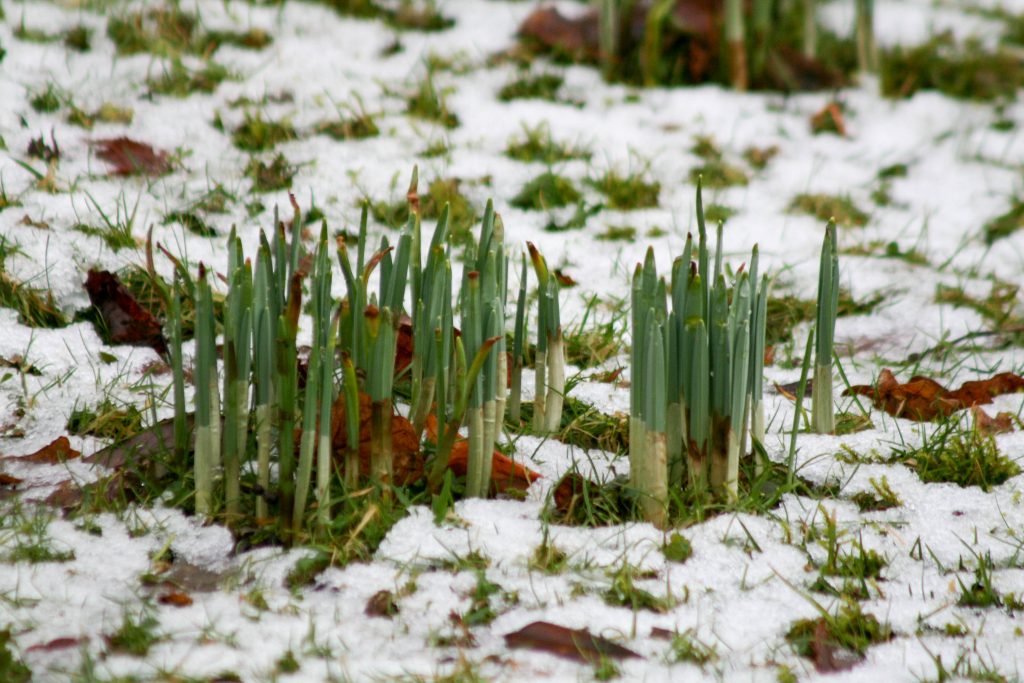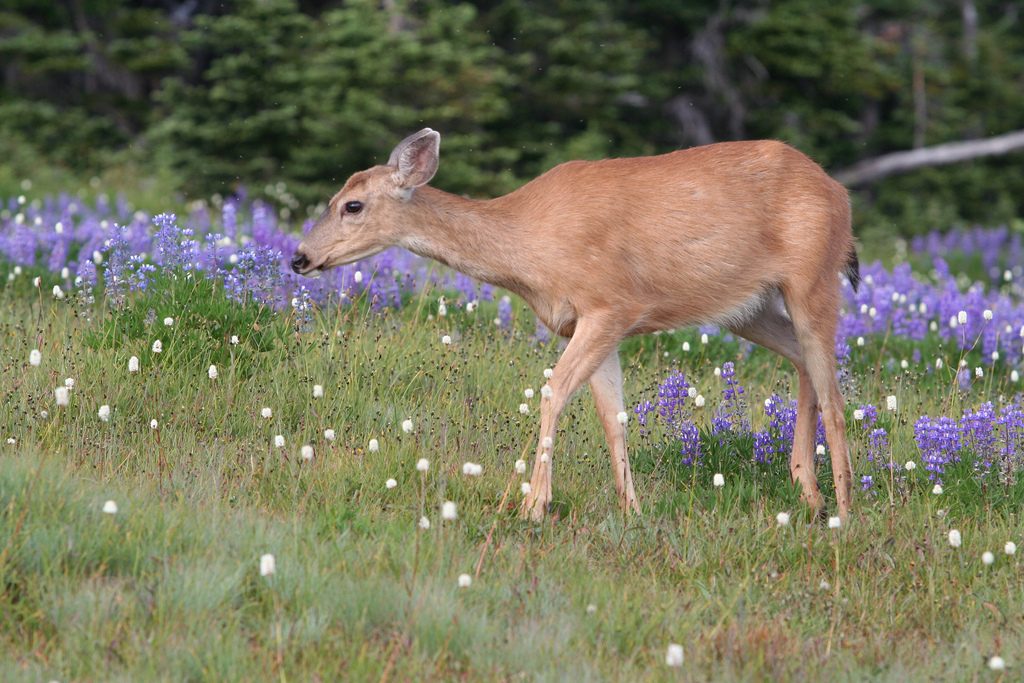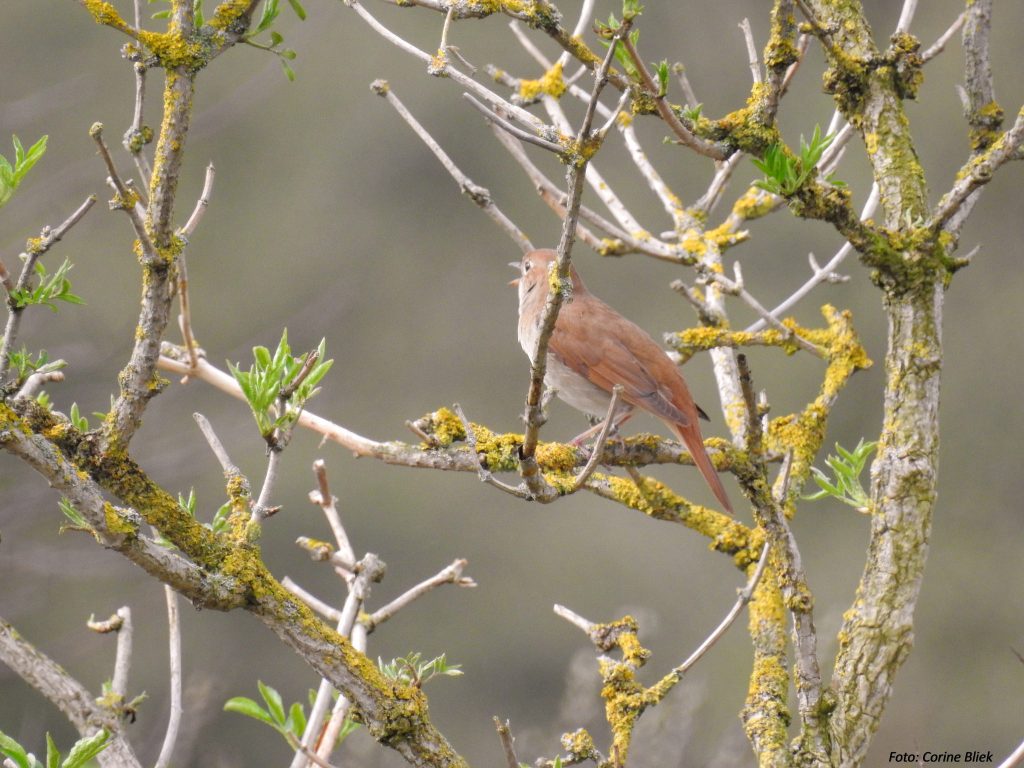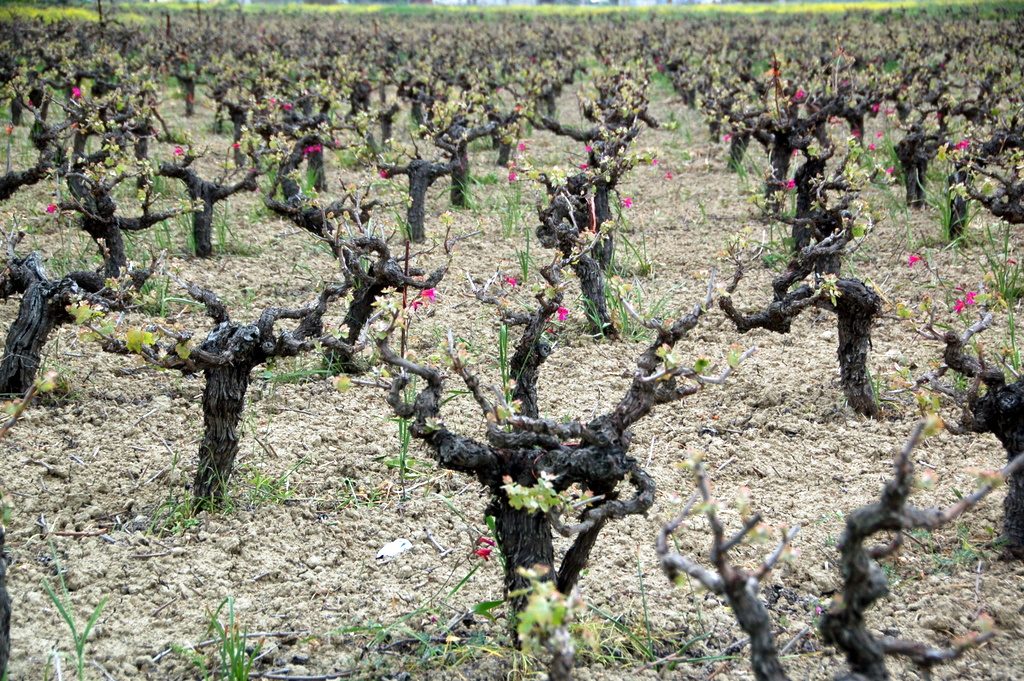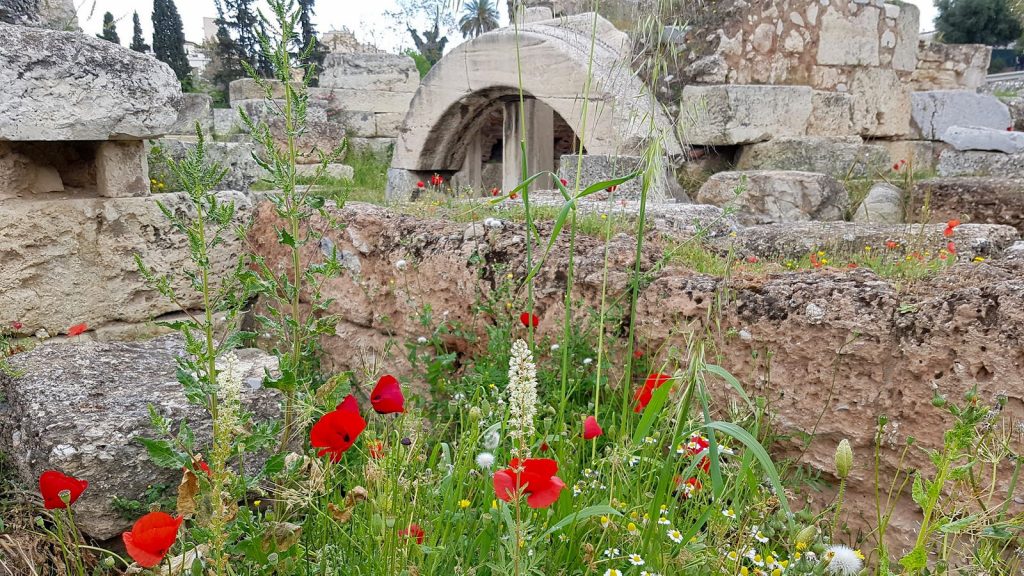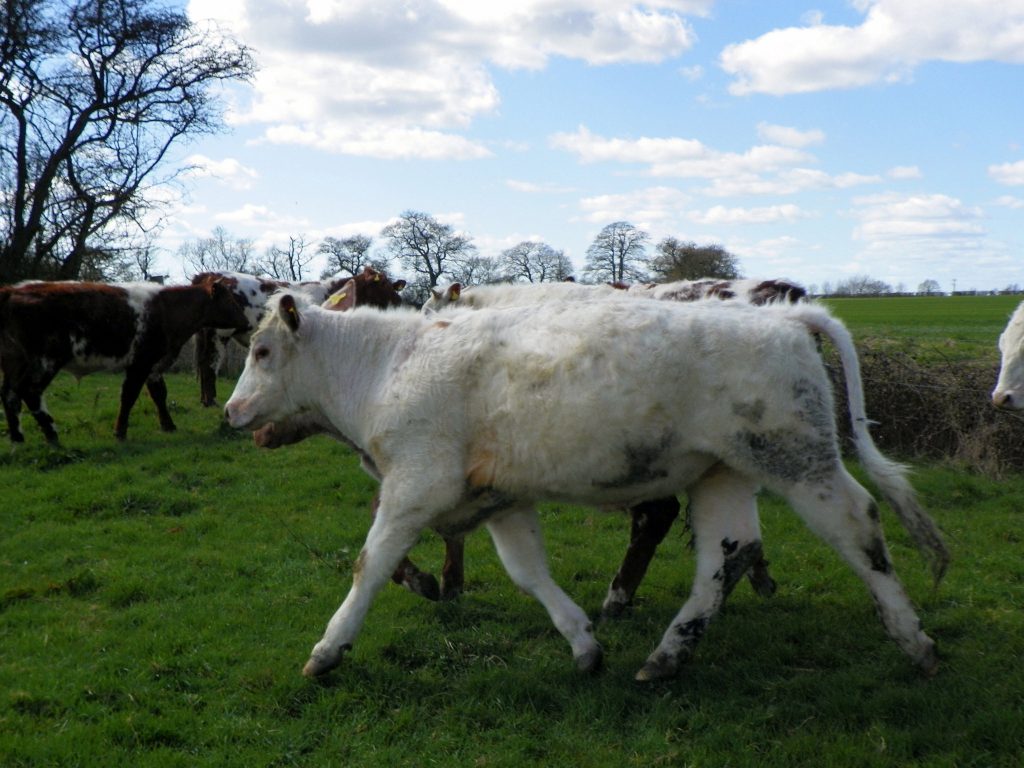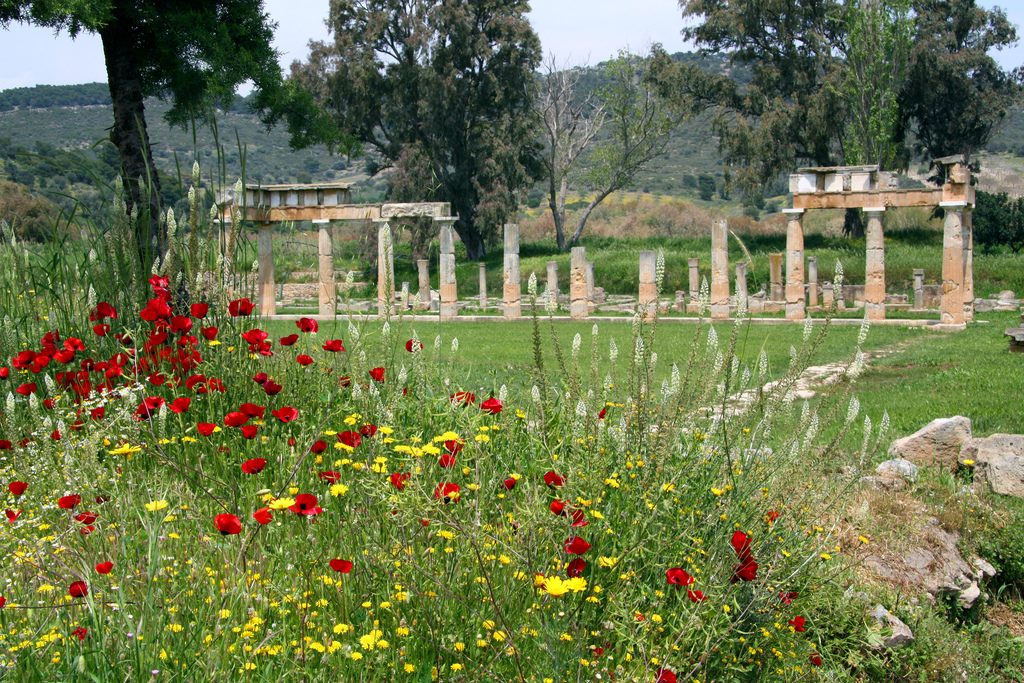After our previous post about snow and winter, we were inspired by this delightful fable from Aesop:
Χειμὼν καὶ ἔαρ.
Χειμὼν ἔσκωψε εἰς τὸ ἔαρ καὶ αὐτὸ ὠνείδισεν ὅτι εὐθὺς φανέντος ἡσυχίαν ἄγει ἔτι οὐδείς, ἀλλ’ ὁ μέν τις ἐπὶ λειμῶνας καὶ ἄλση γίνεται, ὅτῳ ἄρα φίλον δρέπεσθαι ἀνθέων καὶ κρίνων, ἢ καὶ ῥόδον τι περιαγαγεῖν τε τοῖς ἑαυτοῦ ὄμμασιν, καὶ παραθέσθαι [ἣ] παρὰ τὴν κόμην· ὁ δὲ ἐπιβὰς νεὼς καὶ διαβαίνων πέλαγος, ἂν τύχῃ, παρ’ ἄλλους ἤδη ἀνθρώπους ἔρχεται· καὶ ὅτι ἅπαντες ἀνέμων ἢ πολλοῦ ἐξ ὄμβρων ὕδατος ἔχουσι φροντίδα οὐκέτι. Ἐγώ, ἔφη, ἄρχοντι καὶ αὐτοδεσπότῃ ἔοικα, καὶ οὐδὲ εἰς οὐρανόν, ἀλλὰ κάτω που καὶ εἰς τὴν γῆν ἐπιτάττω βλέπειν καὶ δεδιέναι καὶ τρέμειν καὶ ἀγαπητῶς διημερεύειν ἔστιν ὅτε οἶκοι ἠνάγκασα. — Τοιγαροῦν, ἔφη τὸ ἔαρ, σοῦ μὲν κἂν ἀπαλλαγεῖεν ἄνθρωποι ἀσμένως· ἐμοῦ δὲ αὐτοῖς καλὸν καὶ αὐτὸ εἶναι δοκεῖ τοὔνομα, καὶ νὴ μὰ Δία γε ὀνομάτων κάλλιστον, ὅστε καὶ ἀπόντος μέμνηνται καὶ φανέντος ἐπαγάλλονται.
184. WINTER AND SPRING
Perry 271 (Chambry 346)Winter [Kheimōn] made fun of Spring [Ear] and mocked her for the fact that as soon as she appears, nobody can keep still [hēsukhiā]; some people go off to the meadows [leimōn, pl.] or into the woods, others like to gather flowers [anthoi] and lilies [krinon, pl.] or perhaps to gaze upon a rose [rhodon] as they twirl it in the air or to twine it in their hair [komē]; while some board ships and even cross the sea to meet different kinds of people; no one worries any longer about the winds or the great downpours of rain from the sky. ‘Whereas I resemble a dictator or a despot,’ said Winter. ‘I command everyone to look not at the sky but down toward the ground; I frighten them and make them tremble and sometimes I make them content themselves while having to stay at home [oikos] all day.’ Spring [Ear] replied, ‘Indeed, that is exactly why mankind would be glad to get rid of you, whereas even the mere mention of my name is enough to bring them pleasure. By Zeus, there is no name more pleasant than mine! That is why they remember [memnēmai] me when I am gone and give thanks when I appear [phainomai] again.’
Adapted from translation by Laura Gibbs[1]
So we are now aiming to bring you pleasure by sharing some passages about spring!
In Homeric poetry, we can find spring mentioned in similes, those vivid passages that engage all the senses and heighten the narrative. Here is one, when Aeneas and Meriones are trying to rescue the body of Sarpedon:
A man had need of good eyesight now to know Sarpedon, [640] so covered was he from head to foot with spears and blood and dust. Men swarmed about the body, as flies that buzz round the full milk-pails in the season [hōrā] of spring [earinos] when they are brimming with milk—even so did they gather round the body.
Iliad 16.639–644, adapted from Sourcebook[2]
Another simile appears in the Homeric Hymn to Demeter, when Kallidikē has persuaded Demeter—who is grieving for the loss of her daughter Persephone—to come with her to the palace and take care of Metaneira’s young son.

So she [Kallidikē] spoke. And she [Demeter] nodded her assent. So they, 170 filling their splendid jars with water, carried it off, looking magnificent. Swiftly they came to the great palace of their father, and quickly they told their mother what they saw and heard. And she told them quickly to go and invite her [Demeter] for whatever wages, no limits, and they, much as deer or heifers in the hōrā of spring [ear] 175 prance along the meadow [leimōn], satiating their dispositions [phrēn] as they graze on the grass, so also they, hitching up the folds of their lovely dresses, dashed along the rutted roadway, their hair flowing over their shoulders, looking like crocus [krokēios] blossoms [anthoi]. They found the illustrious goddess sitting near the road, just the way 180 they had left her. Then they led her to the phila palace of their father. She was walking behind them, sad in her philon heart. She was wearing a veil on her head, and a long dark robe [peplos] trailed around the delicate feet of the goddess.
Homeric Hymn to Demeter 169–183, adapted from translation by Gregory Nagy, Sourcebook[3]
In that passage there are references to flowers that bloom in spring, and we also find similar flowers mentioned in Hesiod, when Zeus has ordered the gods to create a beautiful woman:
Zeus spoke, and the gods obeyed the Lord Son of Kronos.
70 Right away the famed Lame One shaped out of the clay of the Earth
something that looked like a comely virgin —all on account of the will of Zeus, son of Kronos.
Athena dressed her and tied her girdle, adorning her.
And the goddesses who are named Kharites [Graces], as well as the Lady Peithō [Persuasion],
placed golden necklaces on its skin, and the Hōrai,
75 with their beautiful hair [kallikomoi], plaited springtime [earinos] blossoms [anthoi] around her head.
Pallas Athena placed on her skin every manner of ornament [kosmos].
And within her breast the messenger and Argos-killer fashioned
falsehoods [pseudea], crafty words, and a stealthy disposition,
according to the plans of Zeus the loud-thunderer. And the messenger of the gods
80 put inside her a voice, and he called this woman
Pandōrā, because all the gods who abide in Olympus
gave her as a gift [dōron], a pain for grain-eating men.Hesiodic Works and Days 69–82, adapted from translation by Gregory Nagy, Sourcebook [4]
Such flowers are also mentioned in a beautiful Cyprian poem by a poet from Halicarnassus, featured in a discussion in the Deipnosophists:
The author, too, of the Cyprian Poems calls to mind [memnēmai] lists of the flowers [anthoi] which are suitable to be made into garlands, whether he was Hegesias, or Stasinus, or any one else; for Demodamas, who was either a Halicarnassian or Milesian, in his History of Halicarnassus, says that the Cyprian Poems were the work of a citizen of Halicarnassus: however, the author, whoever he was, in his eleventh book, speaks thus:—
Then did the Graces [Kharites], and the smiling Hours [Hōrai],
Make themselves garments rich with various hues,
And dyed them in the varied flowers [anthoi] that Spring [earinēs]
And the sweet Seasons [Hōrai] in their bosom bear.
In crocus [krokos], hyacinth [huakinthos], and blooming violet [ion],
And the sweet petals of the peerless rose [rhodon],
So fragrant, so divine; nor did they scorn
The dewy cups of the ambrosial flower [anthos]
That boasts Narcissus’ [narkissos] name. Such robes, perfumed
With the rich treasures of revolving seasons [hōrai],
The golden Aphrodite wears.Athenaeus The Deipnosophists 15.30 Adapted from translation by C.D. Yonge[5]
Apart from flowers there are other signs that indicate the season of spring, for example the appearance and song of certain birds.
One such is the nightingale, mentioned by Penelope in a simile:
518 As when the daughter of Pandareos, the nightingale [aēdōn] in the green 519 sings beautifully at the onset anew of springtime [ear], [520] perched in the dense foliage of trees, 521 and she pours forth, changing it around thick and fast, a voice with many resoundings, 522 lamenting her child, the dear [philos] Itylos, whom once upon a time with weapon of bronze 523 she killed inadvertently, the son of Zethos the king—even so does my mind [thūmos] toss and turn in its uncertainty…
Odyssey 19.518–524, adapted from translation by Gregory Nagy [6]
That this was a well-known sign of spring is supported by a reference in comedy:
Chorus
Singing.
Lovable [philos] golden bird, whom I cherish above all others [= most philos], you, whom I associate with all my songs, nightingale [aēdōn], [680] you have come, you have come, to show yourself to me and to charm me with your notes. Come, you, who play spring [ērinos] melodies upon the harmonious flute, lead off our anapests.Aristophanes Birds 676–684, Adapted from translation by Eugene O’Neill, Jr.[7]
But regarding the birds, in a saying so well-known that it has passed into modern English and other languages, Aristotle sounds a note of caution:
μία γὰρ χελιδὼν ἔαρ οὐ ποιεῖ, οὐδὲ μία ἡμέρα ·
for one swallow [khelidōn] does not make spring [ear], nor does one day.Aristotle Nicomachean Ethics 1098a, translation by authors[8]
Another sign of spring is the emergence of frogs. In a discussion about the sights at Delphi, the details on one of the offerings leads to an analysis of the nature of both Apollo—the main god to whom the site is dedicated—and to the sun:
While we were looking at the bronze palm-tree in the treasure-house of the Corinthians, the only one of their votive offerings that is still left, the frogs and water-snakes, wrought in metal about its base, caused much wonder to Diogenianus, and naturally to ourselves as well. …
And you yourselves declare the sun to be an earth-born creature or a water-plant, assigning him to the kingdom of the frogs or water-snakes. But let us refer all this to the heroics of the Stoic school, and let us make a cursory examination of the cursory work of the artisans. In many instances they indeed show elegance and refinement, but they have not in all eases avoided frigidity and over-elaboration. Just as the man who constructed the rooster upon the hand of Apollo’s statue showed by suggestion the early morning and the hour [hōrā] of approaching sunrise, so here, one might aver, has been produced in the frogs a token of springtime [earinos] when the sun begins to dominate the atmosphere and to break up the winter [kheimōn]; that is, if, as you say, we must think of Apollo and the Sun, not as two gods, but as one.’
Plutarch De Pythiae oraculis (‘On the Pythian oracles’), adapted from the translation compiled by William W. Goodwin[9]
Pausanias turns to fish for an example of a spring phenomenon:
From Messene to the mouth of the Pamisus is a journey of eighty stadium-lengths. The Pamisus is a pure stream flowing through cultivated lands, and is navigable some ten stadium-lengths from the sea. Sea-fish run up it, especially in the season [hōra] of spring [ear], as they do up the Rhine and Maeander. The chief run of fish is up the stream of the Akhelōos, which discharges opposite the Echinades islands.
Pausanias Description of Greece 4.34.1, adapted from translation by Jones/Nagy[10]
Plants, birds, and animals are all signs of spring, and the Greek texts observe that the season has an effect on human behavior and ritual as well. Here Pausanias describes some examples of seasonally-recurring spring rituals:
Above Migonium is a mountain called Larysiumi sacred to Dionysus, and at the beginning of spring [ear] they hold a festival in honor of Dionysus, and among the things they say about the ritual is that they find here a ripe [= seasonal, adjective of hōra] bunch of grapes.
Pausanias Description of Greece 3.22.2, adapted from translation by Jones/Nagy[11]
Mount Kronion, as I have already said, extends parallel to the terrace with the treasuries on it. On the summit of the mountain the Basilai, as they are called, sacrifice to Kronos at the spring [ear] equinox [isēmeria], in the month called Elaphios among the Eleians.
Pausanias Description of Greece 6.20.1, adapted from translation by Jones/Nagy [12]
Not far from the city of Patraiis the river Meilichus, and the sanctuary [hieron] of Triclaria, which no longer has an image. This is on the right. Advancing from the Meilichus you come to another river, the name of which is the Kharadros. The flocks and herds that drink of this river in the season [hōra] of spring [ear] are bound to have male young ones for the most part, and for this reason the herdsmen remove all except the cows to another part of the country. The cows they leave behind by the river, because for sacrifices and for agriculture bulls are more suitable than cows, but in the case of other cattle the females are preferred.
Pausanias Description of Greece 7.22.11, adapted from translation by Jones/Nagy[13]
Plutarch also has notes about seasonal rituals. Here, he is referring to the Romans’ names for the months:
And besides, it was reasonable that March, which is consecrate to Mars, should be put in the first place by Romulus, and April in the second place, since this month is named after Aphrodite. In it they sacrificed to this goddess, and on its first day the women bathe with myrtle garlands on their heads. Some, however, say that April, with its smooth ‘p,’ cannot be derived from Aphrodite, with its rough ‘ph,’ but that this month of high spring [earinēs] time [hōra] is called April because it opens and discloses the buds and shoots in vegetation, this being the meaning of the word ‘aperio.’
Plutarch Numa 19.2, adapated from translation by Bernadotte Perrin[14]
But it is not only rituals that occur in spring. Plutarch also observes more everyday behavior:
AEDEPSUS in Euboea, where the baths are, is a place by nature every way fitted for free and gentle pleasures, and withal so beautified with stately edifices and dining rooms, that one would take it for no other than the common place of repast for all Greece. Here, though the earth and air yield plenty of creatures for the service of men, the sea no less furnishes the table with variety of dishes, nourishing a store of delicious fish in its deep and clear waters. This place is especially frequented in the spring [ear]; for hither at this time-of-year [hōra] abundance of people resort, solacing themselves in the mutual enjoyment of all those pleasures the place affords, and at spare hours pass away the time in many useful and edifying discourses.
Plutarch Quaestiones Conviviales 4.4, adapted from translation by Goodwin[15]
Our final selection is an elegy to a poetess in which spring is mentioned:
ἄρτι λοχευομένην σε μελισσοτόκων ἔαρ ὕμνων,
ἄρτι δὲ κυκνείῳ φθεγγομένην στόματι,
ἤλασεν εἰς Ἀχέροντα διὰ πλατὺ κῦμα καμόντων
μοῖρα, λινοκλώστου δεσπότις ἠλακάτης:
σὸς δ᾽ ἐπέων, Ἤριννα, καλὸς πόνος οὔ σε γεγωνεῖ
φθίσθαι, ἔχειν δὲ χοροὺς ἄμμιγα Πιερίσιν.Just now as you were giving birth to spring [ear] of bee-honied hymns,
and just now as you were uttering with the mouth of a swan,
she drove you to Acheron through the broad swell of sufferings
she, Fate [Moira], mistress of the flax-spinning distaff:
but, Erinna, the beautiful labor [ponos] of your verses [epea] cries out that you do not
wilt [phthi-n-ein], but keep the singing-and-dancing [khoroi] in profusion with the Pierides [= Muses].Greek Anthology 7.12, translation by authors[16]
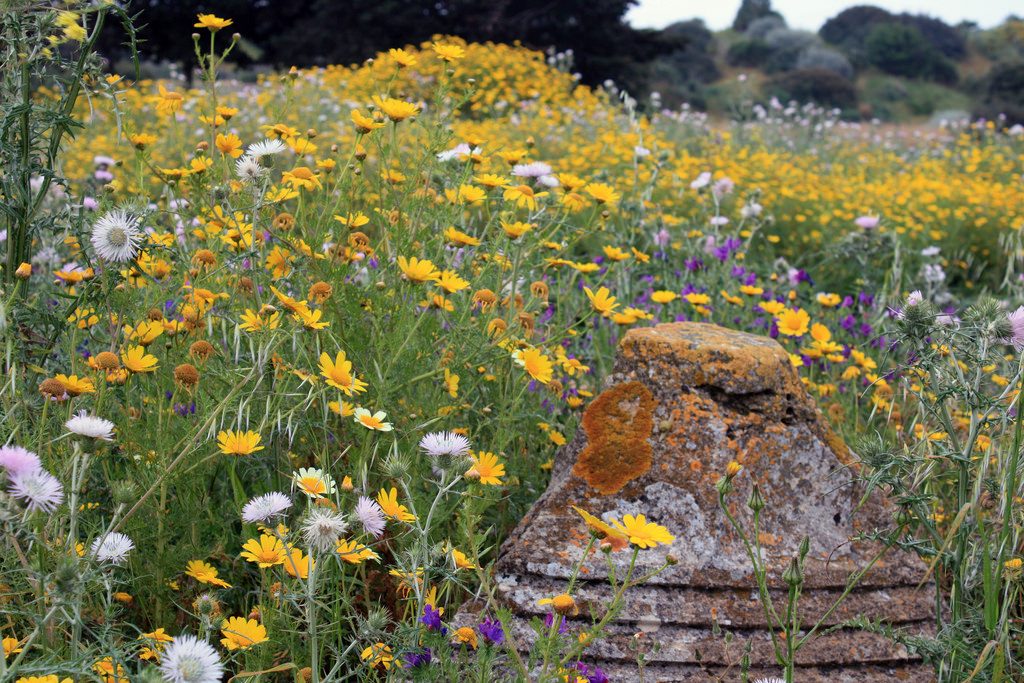
Since the poets can invoke spring through their words, we invite you to join us in the Forum to share other passages to invoke the season, whether it is mentioned by name, or referred to by the signs from nature such as seasonal flowers, the behavior of animals, or the performance of rituals.
Selected Greek terms relating to spring
Greek terms retrieved from texts on Perseus, and definitions summarized from LSJ[17]
aēdōn [ἀηδών] “songstress, nightingale”
anthos [ἄνθος “blossom, flower”
ear [ἔαρ] “spring; (metaphorically) prime, flower; fresh, bright”
earinos [ἐαρινός] / ērinos [ἠρινός] adjective “of spring, in spring-time”
huakinthos [ὑάκινθος] “hyacinth”: the name of the flower and of a hero
ion [ἴον] “violet, Viola odorata”
isēmeria [ἰσημερία] “equinox”
khelidōn [χελιδών] “swallow”
krinon [κρίνον] “lily, white lily”
krokeos [κρόκεος] / krokēios [κροκήιος] adjective “saffron-colored”
krokos [κρόκος] “saffron, crocus, Crocus sativus”
leimōn [λειμών] “moist grassy place;meadow; (metaphorically) bright, flowery surface”
narkissos [νάρκισσος] “narcissus”: the name of the flower and of a hero
rhodon [ῥόδον] “rose”
Notes
[1] Greek text: Chambry 1925/6, Aesop, Paris, Belles Lettres.
Online at Aesopica: Aesop’s Fables in English, Latin & Greek
English text: Gibbs, Laura. 2002. Aesops’ Fables. Oxofrd, Oxford University Press.
Online at Aesopica: Aesop’s Fables in English, Latin & Greek
[2] Greek text Homer. Homeri Opera in five volumes. Oxford, Oxford University Press. 1920.
Online at Perseus
English text:
Sourcebook The Ancient Greek Hero in 24 Hours Sourcebook of Original Greek Texts Translated into English, Gregory Nagy, General Editor. 2018.12.12. Available online at the Center for Hellenic Studies
https://nrs.harvard.edu/urn-3:hul.ebook:CHS_NagyG_ed.Sourcebook_H24H.2013-
Sourcebook Homeric Iliad Translated by Samuel Butler. Revised by Soo-Young Kim, Kelly McCray, Gregory Nagy, and Timothy Power
[3] Greek text:
The Homeric Hymns and Homerica with an English Translation by Hugh G. Evelyn-White. Homeric Hymns. Cambridge, MA.,Harvard University Press; London, William Heinemann Ltd. 1914. Online at Perseus
English text:
Sourcebook Homeric Hymn to Demeter. Translated by Gregory Nagy.
[4] Greek text:
Hesiod. The Homeric Hymns and Homerica with an English Translation by Hugh G. Evelyn-White. Works and Days. Cambridge, MA.,Harvard University Press; London, William Heinemann Ltd. 1914.
Online at Perseus
English text:
Sourcebook Works and Days. Hesiodic Works and Days, translated by Gregory Nagy
[5] Greek text:
Athenaeus. The Deipnosophists. with an English Translation by. Charles Burton Gulick. Cambridge, MA. Harvard University Press. London. William Heinemann Ltd. 1927. 1.
Online at Perseus
English text:
Athenaeus. The Deipnosophists. Or Banquet Of The Learned Of Athenaeus. London. Henry G. Bohn, York Street, Covent Garden. 1854.
Online at Perseus
[6] Greek text:
Homer. The Odyssey with an English Translation by A.T. Murray, PH.D. in two volumes. Cambridge, MA., Harvard University Press; London, William Heinemann, Ltd. 1919.
Online at Perseus
English translation:
Sourcebook Homeric Iliad Translated by Samuel Butler. Revised by Soo-Young Kim, Kelly McCray, Gregory Nagy, and Timothy Power.
[7] Greek text:
Aristophanes. Aristophanes Comoediae, ed. F.W. Hall and W.M. Geldart, vol. 2. F.W. Hall and W.M. Geldart. Oxford. Clarendon Press, Oxford. 1907.
Online at Perseus
English translation:
Aristophanes. Birds. The Complete Greek Drama, vol. 2. Eugene O’Neill, Jr. New York. Random House. 1938.
Online at Perseus
[8] Greek text:
ed. J. Bywater. 1894. Aristotle’s Ethica Nicomachea. Oxford, Clarendon Press.
Online at Perseus
[9] Greek text:
Plutarch. Moralia. Gregorius N. Bernardakis. Leipzig. Teubner. 1891. 3.
Online at Perseus
English translation:
Plutarch. Plutarch’s Morals. Translated from the Greek by several hands. Corrected and revised by. William W. Goodwin, PH. D. Boston. Little, Brown, and Company. Cambridge. Press Of John Wilson and son. 1874. 3.
Online at Perseus
[10] Greek text:
Pausanias. Pausaniae Graeciae Descriptio, 3 vols. Leipzig, Teubner. 1903.
Online at Perseus
English translation:
Description of Greece: A Pausanias Reader. Translation based on the original rendering by W. H. S. Jones, 1918 (Scroll 2 with H.A. Ormerod), containing some of the footnotes of Jones. The translation is edited, with revisions, by Gregory Nagy:
https://nrs.harvard.edu/urn-3:hlnc.prim-src:A_Pausanias_Reader_in_Progress.2018-/#IV
[11] Greek text:
Pausanias. Pausaniae Graeciae Descriptio, 3 vols. Leipzig, Teubner. 1903.
Online at Perseus
English translation:
Description of Greece: A Pausanias Reader. Translation based on the original rendering by W. H. S. Jones, 1918 (Scroll 2 with H.A. Ormerod), containing some of the footnotes of Jones. The translation is edited, with revisions, by Gregory Nagy
https://nrs.harvard.edu/urn-3:hlnc.prim-src:A_Pausanias_Reader_in_Progress.2018-/#III
[12] Greek text:
Pausanias. Pausaniae Graeciae Descriptio, 3 vols. Leipzig, Teubner. 1903.
Online at Perseus
English translation:
Description of Greece: A Pausanias Reader. Translation based on the original rendering by W. H. S. Jones, 1918 (Scroll 2 with H.A. Ormerod), containing some of the footnotes of Jones. The translation is edited, with revisions, by Gregory Nagy
https://nrs.harvard.edu/urn-3:hlnc.prim-src:A_Pausanias_Reader_in_Progress.2018-/#VI
[13] Greek text:
Pausanias. Pausaniae Graeciae Descriptio, 3 vols. Leipzig, Teubner. 1903.
Online at Perseus
English translation:
Description of Greece: A Pausanias Reader. Translation based on the original rendering by W. H. S. Jones, 1918 (Scroll 2 with H.A. Ormerod), containing some of the footnotes of Jones. The translation is edited, with revisions, by Gregory Nagy
https://nrs.harvard.edu/urn-3:hlnc.prim-src:A_Pausanias_Reader_in_Progress.2018-/#VII
[14] Greek text and English translation:
Plutarch. Plutarch’s Lives. with an English Translation by. Bernadotte Perrin. Cambridge, MA. Harvard University Press. London. William Heinemann Ltd. 1914. 1.
Online at Perseus
[15] Greek text:
Plutarch. Moralia. Gregorius N. Bernardakis. Leipzig. Teubner. 1892. 4.
Online at Perseus
English translation:
Plutarch. Plutarch’s Morals. Translated from the Greek by several hands. Corrected and revised by. William W. Goodwin, PH. D. Boston. Little, Brown, and Company. Cambridge. Press Of John Wilson and son. 1874. 3.
Online at Perseus
[16] We are grateful to Leonard Muellner for his feedback and advice on our translation.
Greek text: W. R. Paton. 1917. The Greek Anthology. Volume 2. London. William Heinemann Ltd.
Online at Perseus
[17] LSJ: Henry George Liddell. Robert Scott. 1940. A Greek-English Lexicon. revised and augmented throughout by. Sir Henry Stuart Jones. with the assistance of. Roderick McKenzie. Oxford. Clarendon Press. Online at Perseus:
Online at Perseus
Websites accessed March 2019. (CHS links updated March 2021).
Image credits
Paul Morris: Narcissus in snow
Creative Commons CC BY-NC-ND 2.0 via Flickr
Allan Leonard: Green shoots.
Creative Commons CC BY-NC 2.0 via Flickr
Laura Ferreira: She ran away!
Creative Commons CC BY-NC-ND 2.0, via Flickr
Amy the Nurse: deer
Creative Commons CC BY-NC-ND 2.0, via Flickr
Detail of red-figured calyx-krater depicting the creation of Pandora, Attic, c 460–450 BCE, British Museum 1856,1213.1 © The Trustees of the British Museum, Creative Commons CC BY-NC-SA 4.0
Karen: Spring
Creative Commons CC BY-NC-ND 2.0, via Flickr
Cam Miller: The Blues of Spring
Creative Commons CC BY-NC-ND 2.0, via Flickr
Kissed by Fire: Violets
Creative Commons CC BY-NC-ND 2.0, via Flickr
slack12: Spring flower
Creative Commons CC BY-NC-ND 2.0, via Flickr
Corine Bliek: Nightingale
Creative Commons CC BY-NC 2.0, via Flickr
Dutch Simba: Barn swallow
Creative Commons CC BY-NC-ND 2.0, via Flickr
Robert Wallace: Budding Vines, Tsilvi
Creative Commons BY-NC-ND 2.0 via Flickr
Herbert Frank: Athen, Kerameikos
Creative Commons CC BY 2.0, via Flickr
Peter O’Connor GOC Willian & Weston Hills 054: Cattle
Creative Commons CC BY-SA 2.0, via Flickr
Miltos Gikas: Temple of Artemis, Vravron, Attica, Greece
Creative Commons CC BY 2.0 via Flickr
TheVRChris: A cloudy afternoon at Loutra of Aidipsos
Creative Commons CC BY-NC-ND 2.0, via Flickr
Peter Elman: Selinunte temple ruins 1
Creative Commons CC BY-NC-ND 2.0 via Flickr
Note: Images have been selected from pictures that are freely available with open source or Creative Commons licenses or from photographs sent in by community members for the purpose. The images in this post are intended to suggest the subject, rather than illustrate exactly—as such, they may be from other periods, subjects, or cultures. Attributions are based where possible by those shown by museums, or on Wikimedia Commons or Flickr, at the time of publication on this website.
Images accessed March 2019.
____
Hélène Emeriaud, Janet Ozsolak, and Sarah Scott are members of the Kosmos Society.

